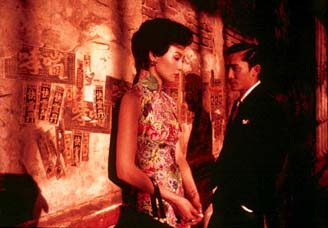|
Flying Cinema by Liang Xiong
Raging Bull (1980 )
Up till today, this film is still as revered as it was in its time. Filmed entirely in crisp black and white, it chronicles the rise and fall of true-life Bronx boxer Jake la Motta (Robert de Niro ) as he struggles with his career and inner demons. The film opens with the strains of Mascagni's Cavelleria Rusticana being played in the background as a lone hooded boxer prances and shadow boxes in slow motion in the ring. Only the main title stands out in a bright crimson red amongst the stark monochrome image. The boxer is in full concentration as he attacks an invisible foe, oblivious to the smoke and camera bulbs swirling and exploding around him….The next scene shows a grossly overweight Jake, dressed in a tuxedo and rehearsing his lines in front of a mirror. His days as a champion boxer are long gone, as he is now a bar owner who gives nightly stand up performances. Ultimately, it is this self-obsession that led to Jake's come-uppance. His thirst for success and personal glory led to neglect and a growing amount of suspicion and paranoia on his family. There comes a point where he no longer trusts anyone, even his own brother (Joe Pesci ). " Did you fuck my wife?" he blurts after drilling him with questions in the now famous scene, before physically abusing both of them. Robert
de Niro won an Oscar for Best Actor which he deservedly should.
He underwent months of training with the real Jake la Motta, who
served as an advisor on the film. On screen, he was the embodiment
of male chauvinism and ego, along with underlying sexual tensions.
It made you believe he was the real Jake la Motta. However, the
protagonist was said by his wife to be much worse than that portrayed
on screen. Then, to play the older and overweight la Motta, de Niro
ate and gained an incredible amount of weight till he was almost
unrecognizable. The rest of the supporting cast was also very believable,
all of them a little untasty and oily. Towards the end of the film, Jake is a wasted man, disowned by his brother and dumped by his wife. He is then locked up in prison for a day for letting underaged girls into his bar. There, he bangs his head and fists against the cell wall, sobs and exclaims: " Why? Why?! Why?!!……I'm not an animal……I'm not that bad…..I'm not an animal." It is a sad moment; a man so disillusioned and stubborn that cannot tell right from wrong. And at that point, we actually do pity him. This
film was highly criticised for its use of language during its time.
"..it contained more four-letter words than any film ever made.."
, as one critic stated. Others felt that the main character was
too ugly and immoral to ever deserve big screen treatment. However,
such views soon vanished as people start to appreciate the unsettling
power of the film. You never feel as though you are watching a film;
you feel as though you are spying on them. It was voyeuristic in
a sense. Such was the talent and brilliance of Martin Scorsese….pity
they don't make films like these anymore. |

|
Flying
Cinema by redjarsz
In the Mood For Love "I don't believe in acting." - Wong Kar Wai Wong Kar Wai has done a Tarantino - as Quentin did with Jackie Brown in order to differentiate it from the slavish imitators who copied the noir hipness of Pulp Fiction. So too has Wong with In the Mood for Love, which is a stylistic shift away from the visual musings and rhythms of previous films. Here, the cutting is less frenetic, more considered, and they hold the audience in a captive sway, like one of the 20-odd cheongsams that Cheung's character wears. Their daily ritual is the trip to the noodle stall to buy something for themselves, since their spouses never seem to be around. In a coda that is repeated several times, they walk past each other in the darkened alley, mindful of their longing. Layered over the scene is the gorgeous plaintive violin waltz, which seems to echo their movements: they are merely following predetermined moves, they are playing out a dance. Their relationship is fixed in time, running its course. Way
back in 1957 One night, she gets stuck in his room because the neighbours have brought home some mahjong kakis for a whole day of gambling. Unable to come out for fear that she be seen, the two of them are forced to take a day's leave in order to avoid being seen. Although
they are careful in the details of their affair, they do not know
how the affair began in the first place. Theirs is a love that does
not steal, that does not laugh, but merely is. |